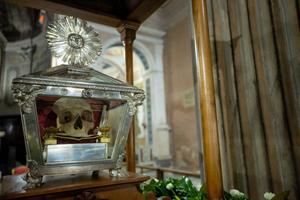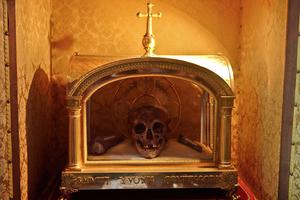Bones Believed to Be St. Peter’s Discovered in 1,000-Year-Old Church in Rome
Routine restoration work uncovered fragments that may belong to the first pope, three other popes and four early Church martyrs.

ROME — During routine restoration of a nearly 1,000-year-old church, a worker discovered bone fragments in clay pots that may belong to St. Peter, three other popes and four early Church martyrs.
“There were two clay pots which were inscribed with the names of early popes — Peter, Felix, Callixtus and Cornelius,” the worker told Italian television channel Rai Uno, according to The Telegraph.
“I'm not an archaeologist but I understood immediately that they were very old. Looking at them, I felt very emotional.”
The existence of the bone fragments has been known for centuries, but they had never been found. Inside the Church of Santa Maria in Cappella, a stone inscription recorded the remains, indicating that the relics where kept alongside a piece of fabric believed to have been taken from the dress of the Blessed Virgin Mary.
Due to structural problems, the church has been closed for 35 years. As part of routine maintenance, the worker discovered the bones under a marble slab behind the altar.
The worker then notified Deacon Massimiliano Floridi, who handed the remains over to the Vatican. Church officials have not yet commented on the bones’ authenticity.
“We’re waiting for a detailed study to be undertaken. A DNA comparison between these bones and those kept by the Vatican would shed light on the issue,” the deacon said.
Santa Maria Church in Cappella is located in the district of Trastevere, Rome, near the Tiber River. Consecrated in 1090 by Pope Urban II, the church is home to many other historical and artistic treasures, including ceramics and murals dating back to the fourth century.
The church also includes a fragment of the episcopal chair, which was once a temporary seat of the Papal Consistory, a formal gathering of the College of Cardinals as called by the pope.
Some have theorized that the relics were moved to the church for protection under the rule of Pope Urban II. During a schism, the legitimacy of Pope Urban II was challenged by Clement III, who was an anti-pope backed by Emperor Henry IV.

















